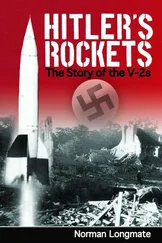Mike Mullane - Riding Rockets
Здесь есть возможность читать онлайн «Mike Mullane - Riding Rockets» весь текст электронной книги совершенно бесплатно (целиком полную версию без сокращений). В некоторых случаях можно слушать аудио, скачать через торрент в формате fb2 и присутствует краткое содержание. Жанр: Старинная литература, на английском языке. Описание произведения, (предисловие) а так же отзывы посетителей доступны на портале библиотеки ЛибКат.
- Название:Riding Rockets
- Автор:
- Жанр:
- Год:неизвестен
- ISBN:нет данных
- Рейтинг книги:3 / 5. Голосов: 2
-
Избранное:Добавить в избранное
- Отзывы:
-
Ваша оценка:
- 60
- 1
- 2
- 3
- 4
- 5
Riding Rockets: краткое содержание, описание и аннотация
Предлагаем к чтению аннотацию, описание, краткое содержание или предисловие (зависит от того, что написал сам автор книги «Riding Rockets»). Если вы не нашли необходимую информацию о книге — напишите в комментариях, мы постараемся отыскать её.
Riding Rockets — читать онлайн бесплатно полную книгу (весь текст) целиком
Ниже представлен текст книги, разбитый по страницам. Система сохранения места последней прочитанной страницы, позволяет с удобством читать онлайн бесплатно книгу «Riding Rockets», без необходимости каждый раз заново искать на чём Вы остановились. Поставьте закладку, и сможете в любой момент перейти на страницу, на которой закончили чтение.
Интервал:
Закладка:
However, designing and building this manned liquid-fueled booster was going to be very expensive at a time when NASA’s budget was being slashed. The agency had won the race to the moon and Congress was ready to do other things with the billions of dollars NASA had been consuming. In this new budget reality NASA looked for cheaper booster designs and settled on twin reusable Solid-fueled Rocket Boosters (SRBs). These were just steel tubes filled with a propellant of ammonium perclorate and aluminum powder. These ingredients were combined with a chemical “binder,” mixed as a slurry in a large Mixmaster, then poured into the rocket tubes like dough into a bread pan. After curing in an oven, the propellant would solidify to the consistency of hard rubber, thus the name solid rocket booster.
Because they were the essence of simplicity, SRBs were therefore cheap. Also, because after burnout they were just empty tubes, they could be parachuted into salt water and reused. There was just one huge downside to SRBs: They were significantly more dangerous than liquid-fueled engines. The latter can be controlled during operation. Sensors can monitor temperatures and pressures, and if a problem is detected computers can command valves to close, the propellant flow will stop, and the engine will quit, just like turning off the valve to a gas barbecue. Fuel can then be diverted to the remaining engines and the mission can continue. This exact scenario has occurred on two manned space missions. On the launch of Apollo 13 the center engine of the second stage experienced a problem and was commanded off. The remaining four engines burned longer and the mission continued. On a pre- Challenger shuttle mission the center SSME shut down three minutes early. The mission continued on the remaining two SSMEs, burning the fuel that would have been used by the failed engine.
Solid-fueled rocket boosters lack this significant safety advantage. Once ignited, they cannot be turned off and solid propellant cannot flow, so it cannot be diverted to another engine. At the most fundamental level, modern solid rocket boosters are no different from the first rockets launched by the Chinese thousands of years ago—after ignition they have to work because nothing can be done if they don’t. And, typically, when they do not work, the failure mode is catastrophic. The military has a long history of using solid rocket boosters on their unmanned missiles, and whenever they fail, it is almost always without warning and explosively destructive.
The SRB design for the space shuttle was even more dangerous than other solid-fueled rockets because their huge size (150 feet in length, 12 feet in diameter, 1.2 million pounds) required them to be constructed and transported in four propellant-filled segments. At Kennedy Space Center these segments would be bolted together to form the complete rocket. Each segment joint held the potential for a hot gas leak; there were four joints on each booster. Redundant rubber O-rings had to seal the SRB joints or astronauts would die.
Yet another aspect of the design of the space shuttle made the craft significantly more dangerous to fly than anything that had preceded it. It lacked an in-flight escape system. Had the Atlas rocket, which launched John Glenn, or the Saturn V rocket, which lifted Neil Armstrong and his crew, blown up in flight, those astronauts would have likely been saved by their escape systems. On top of the Mercury and Apollo capsules were emergency tractor escape rockets that would fire and pull the capsule away from a failing booster rocket. Parachutes would then automatically deploy to lower the capsule into the water. The astronauts riding in Gemini capsules had the protection of ejection seats at low altitude and a capsule separation/parachute system for protection at higher altitudes.
The shuttle design did accommodate two ejection seats for the commander and pilot positions, but this was a temporary feature intended to protect only the two-man crews that would fly the first four shakedown missions. After these experimental flights validated the shuttle design, NASA would declare the machine operational, remove the two ejection seats, and manifest up to ten astronauts per flight. Such large crews would be necessary to perform the planned satellite deployments and retrievals, spacewalks, and space laboratory research of the shuttle era. These crews would have no in-flight escape system whatsoever. These were the missions TFNGs were destined to fly. We would have no hope of surviving a catastrophic rocket failure, a dubious first in the history of manned spaceflight.
The lack of an escape system aboard operational space shuttles—indeed, the very idea that NASA could even apply the term operational to a spacecraft as complex as the shuttle—was a manifestation of NASA’s post-Apollo hubris. The NASA team responsible for the design of the space shuttle was the same team that had put twelve Americans on the moon and returned them safely to Earth across a quarter million miles of space. The Apollo program represented the greatest engineering achievement in the history of humanity. Nothing else, from the Pyramids to the Manhattan Project, comes remotely close. The men and women who were responsible for the glory of Apollo had to have been affected by their success. While no member of the shuttle design team would have ever made the blasphemous claim, “We’re gods. We can do anything,” the reality was this: The space shuttle itself was such a statement. Mere mortals might not be able to design and safely operate a reusable spacecraft boosted by the world’s largest, segmented, uncontrollable solid-fueled rockets, but gods certainly could.
It would be more than just the unknowns of a new spacecraft that TFNGs would face. NASA’s post-Apollo mission was also uncharted territory. Having vanquished the godless commies in a race to the moon, the new NASA mission was basically a space freight service.
NASA sold Congress on the premise the space shuttle would make flying into space cheap and they had good reason to make such a claim. The most expensive pieces of the system, the boosters and manned orbiter, were reusable. On paper the shuttle looked very good to congressional bean counters. NASA convinced Congress to designate the space shuttle as the national Space Transportation System (STS). The legislation that followed virtually guaranteed that every satellite the country manufactured would be launched into space on the shuttle: every science satellite, every military satellite, and every communication satellite. The expendable rockets that NASA, the Department of Defense (DOD), and the telecommunications industry had been using to launch these satellites—the Deltas, Atlases, and Titans—were headed the way of the dinosaur. They would never be able to compete with the shuttle on a cost basis. NASA would be space’s United Parcel Service.
But this meant that, of all the planned shuttle missions, only a handful of science laboratory missions and satellite repair missions would actually require humans. The majority of missions would be to carry satellites into orbit, something unmanned rockets had been doing just fine for decades. Succinctly put, NASA’s new “launch everything” mission would unnecessarily expose astronauts to death to do the job of unmanned expendable rockets.
As we TFNGs were being introduced, NASA had to have been feeling good. They had a monopoly on the U.S. satellite launch market. They also intended to gain a significant share of the foreign satellite launch market. The four shuttles were going to be cash cows for the agency. But the business model depended on the rapid turnaround of the orbiters. Just as a terrestrial trucking company can’t be making money with vehicles in maintenance, the shuttles wouldn’t be profitable sitting in their hangars. The shuttle fleet had to fly and fly often. NASA intended to rapidly expand the STS flight rate to twenty-plus missions per year. And, even in the wake of post-Apollo cutbacks, rosy predictions said they had the manpower to do it.
Читать дальшеИнтервал:
Закладка:
Похожие книги на «Riding Rockets»
Представляем Вашему вниманию похожие книги на «Riding Rockets» списком для выбора. Мы отобрали схожую по названию и смыслу литературу в надежде предоставить читателям больше вариантов отыскать новые, интересные, ещё непрочитанные произведения.
Обсуждение, отзывы о книге «Riding Rockets» и просто собственные мнения читателей. Оставьте ваши комментарии, напишите, что Вы думаете о произведении, его смысле или главных героях. Укажите что конкретно понравилось, а что нет, и почему Вы так считаете.












